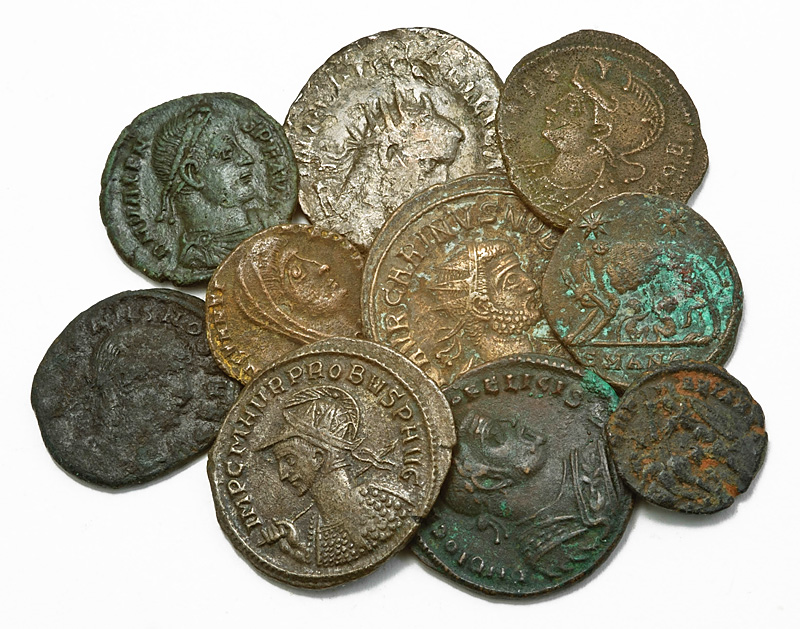

Over a period of about 50 years the iconography of the denarius evolved gradually from stylized representations of Roma on the obverse of the coin to a self-promoting cult of individuals and their families. Towards the end of the Republic in 31 BC, there was a growing cult of the individual on the coinage. This had previously been used mainly to indicate divinity (but Nero used it for his dupondius portraits). The emperor’s portrait on the antoninianus was always ‘radiate’, that is, rays or beams emanated from the head. In the mid-third century the antoninianus became very common and almost displaced the denarius. It was probably intended as a two- denarius piece. The dupondius was also of orichalcum, while the as was of copper.Ī new coin, the antoninianus, was introduced by Caracalla c.

From the beginning of the imperial period the sestertius was minted in orichalcum, ‘brass’, an alloy of copper and zinc with a distinctive golden hue. The Roman gold coin, the aureus, was worth 25 denarii. The last denarii were somewhat debased and weighed 2.0 – 2.5 gms – a very low rate of inflation over 450 years. The denarius itself became Rome’s most important currency unit and lasted into the mid third century AD. The most common division of the denarius was the silver sestertius, equivalent to 2½ asses. The first silver denarii were struck in high grade silver and with a weight of c. In 212 BC, or slightly later, a new coin, the silver denarius, appeared. There was a reduction of the weight of the silver and aes grave, then debasement of the silver. In the Second Punic War the Romans came under severe financial stress. The earliest of these struck issues are now thought to predate the currency bars and cast bronzes. They circulated in Campania and further south. The struck silver and bronze coins were modelled on the coinage of Magna Graecia, and were probably produced in Naples about 325-285 BC. These heavy cast coins continued to be issued until Rome’s financial crisis in the Second Punic War. In the later part of the third century BC the weight of the as was gradually reduced. A very small early coin was the semuncia (= a half ounce, that is, 1/24 of an as). The standardized currency of cast bronze ( aes grave) was based on the denomination of the as, which weighed one pound the double as was the dupondius. The production of currency bars (sometimes called aes signatum) appears to have ceased by the end of the First Punic War (they should not be confused with the much earlier Ramo Secco bars found in Etruria and Sicily). It appears to have had four main elements each developed independently: bronze currency bars, large cast bronze coins (known as aes grave) and struck silver and bronze coins. Early Roman coinage dates from around 300 BC. The early Republic did not use coinage but a system of bronze weights ( aes rude).


 0 kommentar(er)
0 kommentar(er)
